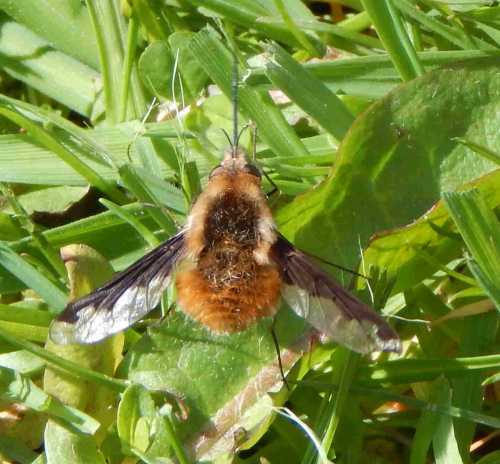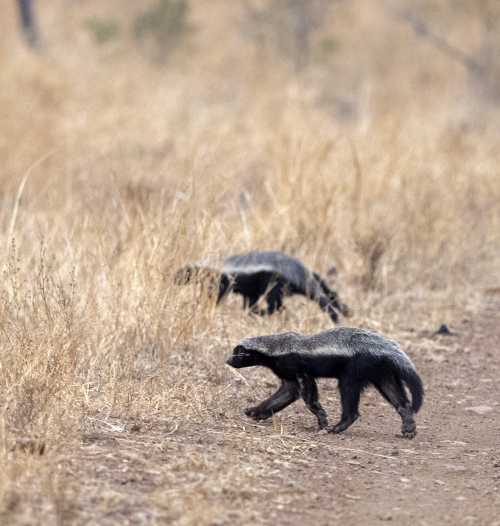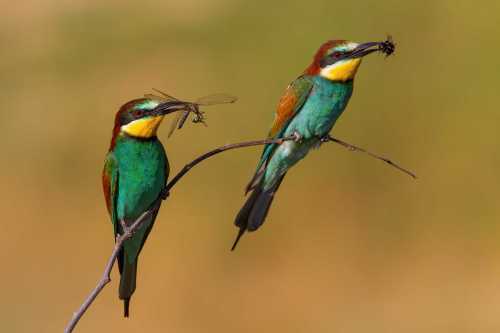Do Birds Eat Bees?
I sometimes get asked about dead bees near bird houses, and such sights have people wondering 'do birds eat bees?'
In reality, even though female bees of most species have a defensive sting, some birds will nevertheless eat bees. Indeed, some bird species are famous for it!
Let's take a look at some of the birds species known to eat bees.
Which Birds Eat Bees?
Some birds will take perhaps one or two bees as part of their general insect diet or to feed chicks.
Here are 6 types of bird known to eat bees.
1. The Bee-eaters
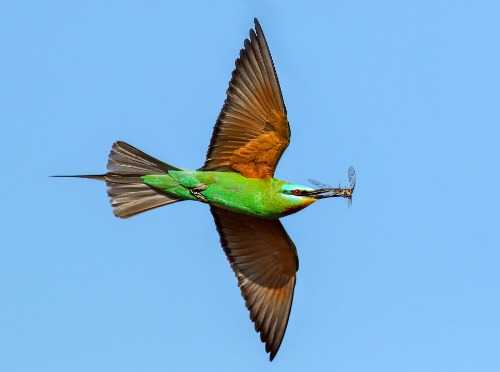 Blue-cheeked Bee-eater (Merops persicus)
Blue-cheeked Bee-eater (Merops persicus)Bee-eaters are found in Europe, Africa, Asia, and Australia. Despite their name, bee-eaters will eat other insects, and not only bees.
In order to avoid being stung, Bee-eaters catch stinging insects mid-flight. They then land and then beat the insect against a tree branch or twig before eating it. Read more about Bee-eaters.
2. The Honeyguides
The honeyguides target honey bees, eating the brood and beeswax.
Only one species of honeyguide bird has been proven to lead humans to honey: the Greater Honeyguide bird (Indicator indicator).
3. Nuthatches (Sitta europaea)
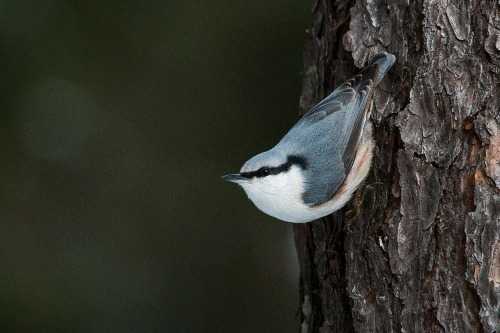 Nuthatch (Sitta europaea)
Nuthatch (Sitta europaea)Adult nuthatches feed on insects, hazel nuts, acorns, beechmast and other nuts and seeds. They feed insects to their young.
The natural habitat of nuthatches is mixed deciduous woodland. They use their bill to dig into tree bark and probe for insect prey, which can be adult or larvae.
Occasionally they have been seen to take insect prey on the wing. Whilst nuthatches will take bees, in reality, they pose little threat. Their primary food sources are flies, beetles, moths, butterflies, bugs and spiders.
One six-year study1 found that only 2.4% of insects fed to nestlings by nuthatches fell into the Hymenoptera insect order (ants, bees, wasps and sawflies).
Of this small percentage, sawflies comprised the majority proportion, whereas the honey bee was recorded on just three occasions.
4. The Fly-catchers (Muscicapidae)
These small to medium insectivorous birds will catch the occasional bee along with other insects, including flies, wasps, damselflies and butterflies.
A key technique of this bird is to perch on a tree branch and await passing prey. As the insect flies by, the bird will quickly dart out, catch the insect on the wing, and return to its original perch to eat it.
5. Woodpeckers
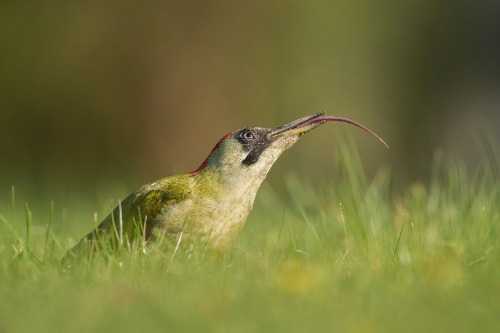 Green Woodpecker (Picus viridis)
Green Woodpecker (Picus viridis)
Some woodpecker species can cause concern for beekeepers, particularly during a severe winter. A harsh winter can create difficulties for hungry woodpeckers having difficulty finding food.
Desperately hungry woodpeckers may cause damage to hives as they endeavour to gain access to the bees and brood.
Beekeepers use a number of methods to discourage woodpeckers attacking hives, such as feeding the woodpeckers, covering hives to protect them from attack and hanging old CDs near hives.
6. The Tits (Parus)
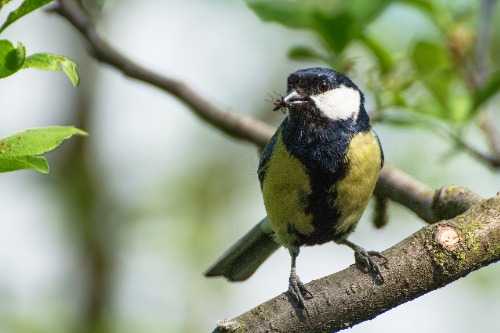 Great tit (Parus major)
Great tit (Parus major)Members of the tit family, in particular, the Great-tit (Parus major), are known to target bumble bee workers as they enter and exit their nests2.
This activity is especially noticeable in gardens when bumble bees nest in disused bird houses.
Bird houses are usually situated in a visible location so that homeowners can enjoy watching birds going in and out to feed the nestlings. Hence, when bumble bees take up residence in the bird house, their activity is also noticed.
Signs of bird attack will be highly visible: several dead bumble bees on the ground below the bird house entrance, usually with missing heads and thorax.
References
1. Kristin A.: Food variability of nuthatch nestlings (Sitta europaea) in mixed beech forests: Where are limits of its polyphagy? . In: Biologia, 1994, 773-779
2. Goulson, D., O'Connor, S., & Park, K. J. (2018b). The impacts of predators and parasites on wild bumblebee colonies. Ecological Entomology, 43, 168–181. 10.1111/een.12482
If you found this page helpful or interesting, I'd really be grateful if you would share it with others - if not this page, perhaps another, such as Gardening For Bees.
Thank you so much :) .
